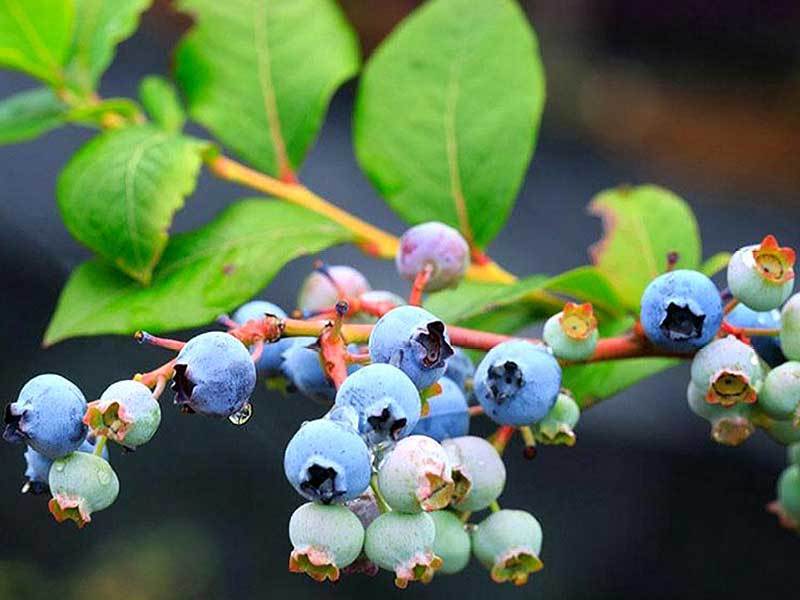The Ultimate Guide to Growing Blueberries in Florida
Understanding Florida's Climate
Florida's Climate and Its Impact
Florida's climate is generally warm. But it can experience mild winters, particularly in north Florida. Blueberries have a specific requirement for "chilling hours". They are the number of hours they need below 45°F to produce a good crop.
When to Plant Blueberries in Florida?
The best time to plant blueberries in Florida is from mid-December to mid-February. These months provide a beneficial climate. The plants can establish their roots without being stressed by the heat.
Best Blueberry to Grow in Florida
Factors to Consider When Selecting Blueberry Varieties
For most of Florida, especially the peninsula, you should choose varieties with low chill hour requirements. This ensures berry set and prevents delayed or erratic flowering.
Look for varieties with extended fruiting seasons. You can enjoy blueberries for a more extended period. Some varieties may show more resistance to common Florida pests. For example, mites and stem blight.
Best Blueberries to Grow in Florida
The Southern Highbush blueberry varieties are a top choice for Florida. Because they have low chill hour requirements. In North Florida, consider Climax and Powderblue, which are more cold-hardy. For Central Florida, Windsor and Emerald are good choices. In South Florida, chill hours are almost non-existent. O'Neal and Sharpblue are popular options.
Site Selection and Preparation
Ideal Soil Conditions
Blueberries need a lot of light to produce fruit. Ensure your blueberry patch has full sun. The soil should be well draining with a pH 4.5-5.5.
Adjusting Soil pH
The soil in southern Florida and the coastal area are alkaline. So adjusting pH is the first major step in establishing your blueberry patch. Sulfur is often the go-to amendment, slowing down pH rise over several months. Alternatively, for more immediate results, try adding elemental sulfur and watering it in well.
Site Preparation Tips
You should perform a soil test before planting blueberry bushes in Florida. Several months before planting, apply the needed amendments at least a foot deep and mix well.
Unlike other states, Florida's blueberries need protection from the sun. Because afternoon heat and sunburn can be intense. A site with partial shade or receiving sunlight only in the morning can offer the best growing conditions.

How to Grow Blueberries in Florida?
Guide to Planting Blueberry Bushes in Florida
Select blueberry plants with green, healthy leaves and no signs of disease. Make a hole twice as wide and just as deep as the root ball. Gently tease the roots apart if they are circling the root ball.
The top of the root ball should be slightly above the soil level. Fill in the hole with soil. Tamp down gently to remove air pockets. Add a layer of pine straw or wood chips. This helps retain moisture and maintain soil acidity. Growing blueberries in Florida in pots is also available.
Spacing Recommendations
Plant blueberries in rows at least 4 to 6 feet apart. Space bushes 3 to 4 feet apart in a garden bed or raised bed. You should create a well-designed blueberry patch. This can ensure adequate sunlight and airflow.
Proper Care and Maintenance
Watering Requirements
Keep blueberry soil moist but not waterlogged. Water consistently and focusing on the root zone. Consider drip irrigation during dry spells. It can deliver water slowly and directly to the roots. Avoid irrigating with hard water. It can raise the soil pH.
When to Fertilize Blueberries in Florida?
Apply a fertilizer formulated for acid-loving plants in late winter to early spring before new growth appears. Then, apply in early summer to support fruit growth. Always follow the recommendations.
When to Prune Blueberries in Florida?
During the first few years, minimal pruning is typically required to encourage bush development. Once mature, focus on removing low growth, dead wood, and thinning out the canopy. This can promote airflow and light penetration. Pruning blueberry bushes in Florida can maintain a balance between new growth and fruit production.
Pest and Disease Management
Common Pests and Diseases
Mummy berry, botrytis blossom blight and anthracnose are common diseases. Blueberry gall midge, blueberry bud mite and blueberry stem borer are common pests.
Control Methods
Use beneficial insects and biological controls first. Utilize organic pesticides and fungicides when necessary. Using chemical insecticides and fungicides for more severe infestations. Always read the labels of any chemical product. Follow the recommended application rates and safety precautions.
Prevention Strategies
Good sanitation, regular scouting, and implementing protective measures can help keep pests at bay. Ensuring proper spacing between plants, using disease-free soil, and avoiding overhead watering. This can aid disease prevention.
Harvesting Your Blueberries
Signs of Blueberry Readiness for Harvest
In Florida, blueberries generally ripen from late March to late June. This depends on the variety. A ripe blueberry will be deep in color and often with a powdery blush known as the 'bloom.' It should be plump and have a slightly sweet scent from the stem end.
Harvesting Blueberries in Florida
Harvest in the cool of the day. For example, very early in the morning or late in the evening. Gently roll each ripe blueberry between your thumb and forefinger.
Ripe berries may have a light scar left from where they were attached to the bush. Be sure to harvest consistently. Not leaving berries on the bush to over-ripen or become a meal for birds.
Troubleshooting Common Problems
Leaf Discoloration
Yellowing leaves may indicate nutrient deficiencies or improper watering. Reddish leaves can signal pH issues or magnesium deficiency. Green veins on yellow leaves indicate iron deficiency.
Poor Fruit Set
Inadequate pollination, high temperatures during flowering, or over-pruning can lead to poor fruit set. Verify cross-pollinating cultivars are present. Consider providing shade during the hottest parts of the day during flowering.

